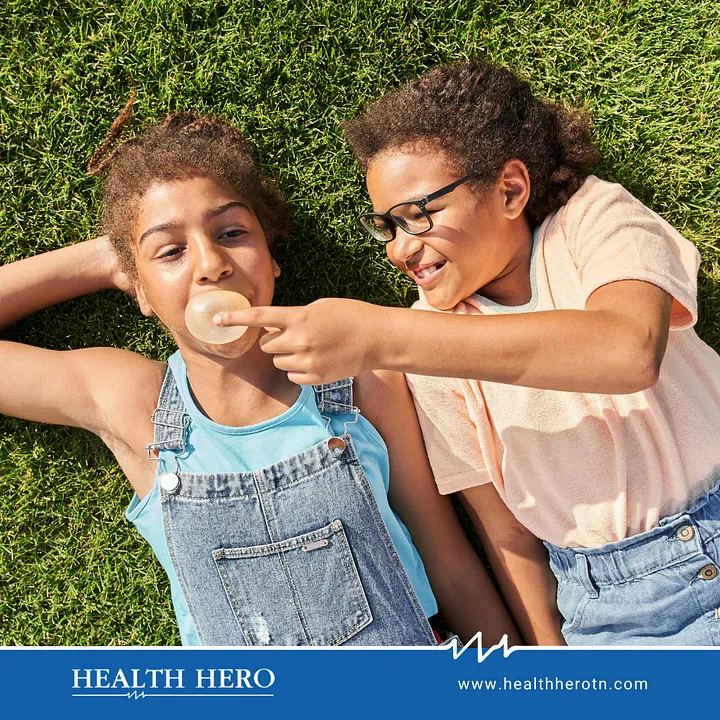Did you know that August has the distinction of “National Immunization Awareness Month” (NIAM) each year? You can think of it like October when you see a lot of pink everywhere as people work to raise awareness and education about breast cancer. Obviously, there are a lot of key issues out there that people should be more aware of and understand the importance of. Off the top of my head, I can think of dozens of cancers, chronic diseases (like heart disease and osteoporosis), dangers of tobacco, mental health, black history, women’s history, animal rights, and gun violence — all having dedicated awareness months. And a quick Google search turned up all kinds of things.
Did you know there is a Blood Clot Awareness Month (March)? As it happens, July is National Vehicle Theft Awareness Month, and on the island of Hawai’i, January is Volcano Awareness Month! I think it is fair to say that some of these awareness months are better known than others. But when you start searching for “August awareness month,” the topic that seems to dominate is immunization awareness, showing how important this issue is all across the U.S.
What is National Immunization Awareness Month?
National Immunization Awareness Month (NIAM) is observed every year in August in the U.S. The purpose of NIAM is to promote how important vaccination (immunization) is for people of all ages. The American Public Health Association and the Centers for Disease Control and Prevention (CDC) emphasize that NIAM is an ideal opportunity to encourage others to talk to a healthcare provider about vaccinations and ensure they are up to date on the necessary vaccines.
What is new about NIAM in 2024?
NIAM might be at its most important in 2024, as public health and healthcare professionals work harder than ever to get accurate information out to the public and stop the flood of misinformation and disinformation that seems to be increasing daily. Doubt about vaccines continues to increase with these inaccuracies, and we have seen childhood vaccination rates decline in the U.S. As many children start back to school this month, we must do whatever we can to stop preventable diseases before they start and keep our children and communities safe and healthy. For NIAM 2024, we are working to stop the decline in childhood vaccinations and to get these rates back up.
Not Just for Kids
The mis- and disinformation about vaccines is not just directed towards childhood vaccines, unfortunately. Some people who promote inaccuracies about vaccines and are very passionate about it target vaccines that save lives among adults and elderly individuals by protecting them from infectious diseases. Vaccine hesitancy refers to a person delaying the acceptance or refusing to receive a safe vaccine even though it is available. In recent years, particularly post-COVID-19 pandemic, we have seen vaccine hesitancy skyrocket in groups of all types of people, frequently resulting in lower vaccination rates. Lower vaccination rates have led to higher rates of preventable, infectious diseases like flu, COVID, and even measles outbreaks. Higher rates of illness have meant more people missing school and work because they are sick, spending more money on health care services, less time spent engaging in socializing and entertainment activities, and in extreme cases, worse mental health outcomes and negative economic impacts. It is definitely a ripple effect. The importance of vaccination should be promoted for individuals of all ages as we work to dispel myths and inaccuracies about vaccinations and to reduce vaccine hesitancy.
Other Questions?
Vaccination has become a very polarizing and even political topic in the U.S., which is both unfortunate and…well, dangerous. Individuals must remember that viruses, diseases, death, etc., do not acknowledge party lines, social status or wealth. Vaccination is important for everyone to protect themselves and their loved ones and contribute to their communities’ safety and health. There is a lot of information out there about vaccines, and some of it is trustworthy; some of it is not. If I were bitten by a snake I could not identify, I probably would not just trust what I found on a Google search about whether it was venomous…even if I found a result that supported my “hunch.” If you are unsure, then do not take a chance with your (and others’) health. Talk to a healthcare provider or message an expert. Ask questions.
As always, message me anytime with questions or thoughts. Take initiative in your health and if you are unsure, then find the answers you seek. If I do not know them, I will find them for you. I am a resource in whatever way I can be, and it is a privilege to be one.
Be Well; Be Kind,
Dr. Casey
Want to Learn More?
The CDC has more information on NIAM as well as resources you can use to promote vaccines for all different age groups here: https://www.cdc.gov/vaccines/events/niam/index.html
At the link above, you can also find short quizzes to help you determine which vaccines you need!
If you are looking for more information about vaccines and immunizations in general, this website from the CDC has a lot of helpful resources, including vaccine schedules, so you and your family can be sure you stay up to date on what vaccines you need as you get older. It also has links to vaccine recommendations for children and recommendations for adults: https://www.cdc.gov/vaccines/index.html
Here is a great page that breaks down the basics of vaccines, including ingredients found in some vaccines, ones found in specific vaccines, and information for you and your family: https://www.cdc.gov/vaccines/basics/index.html
To read more about the decrease in childhood vaccinations in the U.S., check out this article: https://www.cdc.gov/mmwr/volumes/72/wr/mm7245a2.htm

